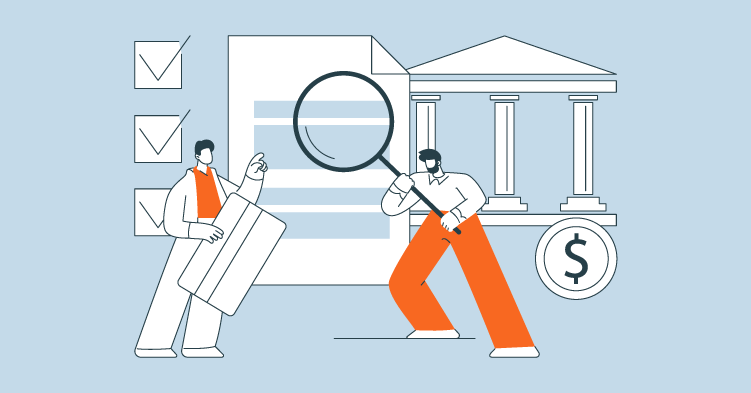Installment loans can help borrowers with everything from buying a home to covering personal expenses. Mortgages, auto loans and personal loans are all examples of installment loans. Each of them provides borrowers with a lump sum of money that they can pay back over time.
While it’s possible to have multiple installment loans, there are some factors you should consider before taking on more debt. You should consider the type of installment loan, the loan amount and what you’ll be using it for before making your decision.
Can I have more than one installment loan?
Yes, you can have more than one installment loan. As long as you have the income and credit score to get approved, there’s not a set limit to the number of loans you can take out.
Multiple installment loans, however, can present risks like increasing your debt-to-income ratio.
Your debt-to-income ratio is the amount of debt you have versus the amount of money you make. The more money you’ve borrowed, the harder it may be to get approved.
Taking on additional debt may also damage your credit score, meaning you could be faced with higher interest rates and worse loan terms.
Can I have multiple installment loans from the same lender?
It may be difficult to get multiple loans from the same lender, but each lender will have different rules. To explore the rules of particular lenders, check their frequently asked questions page or contact a customer service representative.
Typically, it’s easier to get approved for a second loan from another financial institution. This is because every time a lender extends credit, they’re taking a risk that the borrower may not repay the loan. They run credit checks, set interest rates and charge late fees to help reduce this risk, but by offering another loan to the same borrower, they’re increasing that risk, especially since having more debt may make it more difficult to cover loan payments.
In some cases, your lender may be able to offer you an opportunity to refinance your existing installment loan. This provides more funds, but it also typically extends the term of the loan so you’ll be paying it back longer. Refinancing is generally offered based on eligibility, so contact your lender to see if you may qualify.
What are the risks of having more than one installment loan?
You’ll have less room in your budget. When you take on another loan, your expenses are going to increase. With the addition of new monthly payments, you’ll have less wiggle room in your budget. This means you may not be putting enough into a savings account, you may have to cut back on the things you enjoy, or you might not have enough to cover a future emergency.
It will increase your debt-to-income ratio. Your debt-to-income ratio, or DTI, is an important number when it comes to personal finance. Keeping it low will not only ensure that you have more room in your budget, but it also looks better on your credit report. When you take out multiple installment loans you’ll increase this ratio.
It might hurt your credit score. Your credit score may take a hit if you take out a loan. Not only will it increase your DTI which will have a negative impact on your score, but submitting a loan application will also decrease your score if you apply with a lender who reports to the credit bureaus.
You may have higher interest rates. Banks, credit unions, online lenders and other financial institutions look at a number of factors when determining eligibility and interest rates. This includes your credit or FICO score and debt-to-income ratio. If you have a good credit history and a low DTI, you’ll likely see lower interest rates. On the other hand, if you have a bad credit score and a high DTI you’ll likely see high interest rates.
You’ll pay more fees. When you take out a loan, whether it’s a mortgage, student loan or short-term loan like a payday loan, you’ll likely need to pay fees. Depending on the lenders these could be origination fees, fees for late payments, documentation fees or in some cases a prepayment penalty. Having multiple loans means you’ll be paying the fees multiple times.
What are the benefits of having more than one installment loan?
Installment loans provide a single lump sum of funding. Repayment is spread out over time, which breaks up their cost. The main benefit of having multiple installment loans is the additional funds they provide.
When weighed against other credit options, multiple installment loans may offer additional benefits. For instance, compared to a payday loan, installment loans don’t require that borrowers repay all at once. Compared to a line of credit, an installment loan may offer a larger funding amount.
Installment loans can be powerful tools as long as you’re able to make on-time payments and keep enough money in your bank account for life and emergencies. However, you don’t want to damage a good credit score by taking on too much debt, and as a rule it’s always best to avoid unnecessary borrowing.
Are there alternatives to taking out multiple installment loans?
As an alternative to multiple installment loans, borrowers may want to consider different funding options. Each one offers its own unique set of benefits, and borrowers should think it through before deciding which is the best personal loan for them. Before signing a new loan agreement, be sure to carefully consider all your loan options and review each loan offer.
Line of credit. A line of credit is a form of revolving credit that allows you to draw cash advances when you need to cover an expense. Similarly to a credit card, you’ll be given a credit limit that you can borrow from. As the funds are repaid they’ll become available to borrow again.
A line of credit can be useful because you can borrow only the amount you need, and you’ll only pay interest on that amount. They also stay open indefinitely so you don’t have to go through the application process again and again.
Credit card. A credit card is a different type of revolving credit. You can charge expenses to your account up to your credit limit. As you pay off your balance, you’ll be able to utilize your credit limit again. Credit card debt can still be hard on your financial health, but credit card providers often have more flexible payment plans — allowing you to make smaller minimum payments.
A balance transfer credit card may also be an option. You can transfer your existing debt to another creditor and not pay interest on it for an extended period of time — often 12 to 18 months. This can help you pay off, or put a big dent, in your debt since your payments will only be going toward the balance.
Debt consolidation loan. A debt consolidation loan is a big installment loan that you use to pay off other debt. It can be useful if you have loans with high interest rates. Before you take on another loan, you should carefully consider if this option is going to help you or add to your debt burden.
Negotiate with your lender. You may be able to talk with your creditor to work out a payment plan. Lenders are often willing to work with you to change due dates or they may offer repayment terms that are easier to fit into your budget.
Increase your income or decrease your expenses. If you don’t want to take on more debt, you could also look for ways to earn more and spend less money. You may want to consider looking for a side hustle or a new job. You can also examine your expenses and see if there’s anywhere you can cut back.
Ask for help. If you have friends and family that are in a position to help, consider asking them for assistance. We all need help sometimes and most people are open to helping those they love. Be sure to clearly outline when, how or if you’ll pay them back — you don’t want money to be a source of tension in the relationship. You can also get help paying bills from the government and some local charities.




